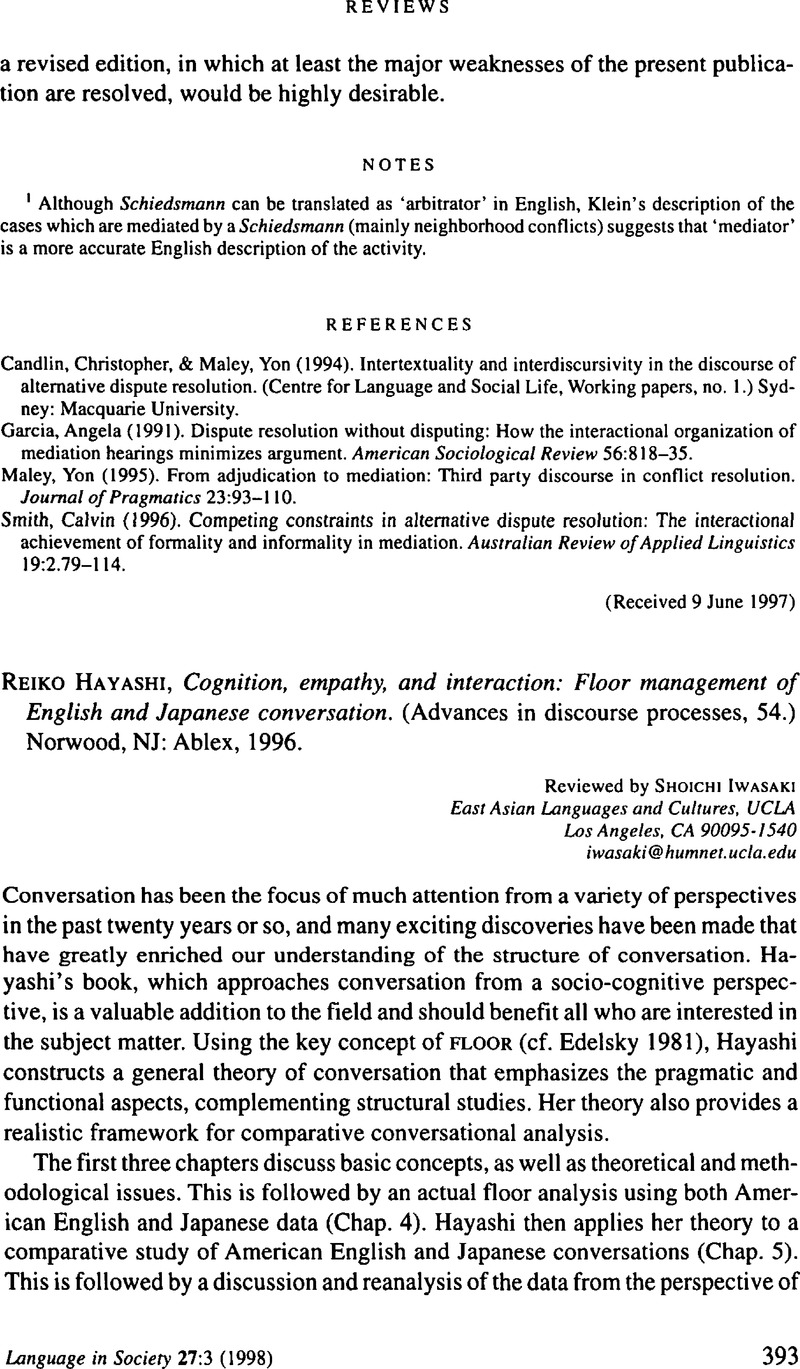No CrossRef data available.
Article contents
Reiko Hayashi, Cognition, empathy, and interaction: Floor management of English and Japanese conversation.(Advances in discourse Processes, 54.) Norwood, NJ: Ablex, 1996.
Published online by Cambridge University Press: 26 July 2012
Abstract
An abstract is not available for this content so a preview has been provided. Please use the Get access link above for information on how to access this content.

- Type
- Reviews
- Information
- Copyright
- Copyright © Cambridge University Press 1998
References
REFERENCES
Edelsky, Carole (1981). Who's got the floor? Language in Society 10:383–421. [Reprinted in Deborah Tannen (ed.), Gender and coversational interaction, 189–227. Oxford & New York: Oxford University Press, 1993.]CrossRefGoogle Scholar
Ford, Cecilia E., & Thompson, Sandra A. (1996). Interactional units in conversation: Syntactic, intonational, and pragmatic resources for the management of turns. In Ochs, Elinor et al. (eds.), Interaction and grammar, 134–84. Cambridge & New york: Cambridge University Press.CrossRefGoogle Scholar
Hayashi, Reiko (1991). Floor stucture of Enhlish and Japanese conversation. Journal of Pragmatics 16:1–30.CrossRefGoogle Scholar
Sacks, Harvey; Schegloff, Emanuel A.; & Jefferson, Gail (1974). A simplest systematics for the organization of turn-taking in conversation. Language 50:696–735.CrossRefGoogle Scholar
Shultz, Jeffrey J.; Florio, Susan; & Erickson, Frederick (1982). Where's the floor? In Gilmore, Perry & Glatthorn, Allan A. (eds.), Children in and out of school, 88–123. Washington, DC: Center for Applied Linguistics.Google Scholar
Yngve, Victor H. (1970). On getting a word in edgewise. Chicago Linguistics Society 6:567–78.Google Scholar




